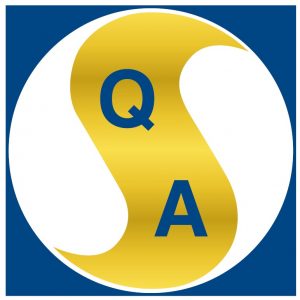OSHA Guide – Cranes and Derricks in Construction
MENU
- Introduction
- Employer Responsibilities
- Section 1400 – Scope
- Section 1401 – Definitions
- Section 1402 – Ground Conditions
- Sections 1403-1406 – Assembly and Disassembly
- Sections 1407-1411 – Power Lines
- Section 1412 – Inspections (with Section 1435(f)-Tower Crane Inspections) and Section 1436(p)-Derricks Inspections)
- Section 1413 – Wire Rope Inspection
- Section 1414 – Wire Rope – Selection and Installation Criteria
- Sections 1415 Safety Devices & 1416 Operational Aids
- Section 1417 – Operation
- Section 1418 – Authority to Stop Operation
- Section 1419-1422 – Signals
- Section 1423 – Fall Protection
- Section 1424 – Work Area Control
- Section 1425 – Keeping Clear of the Load
- Section 1426 – Free Fall and Controlled Load Lowering
- Section 1427 – Operator Qualification and Certification
- Section 1428 – Signal Person Qualifications
- Section 1429 – Qualifications of Maintenance & Repair Employees
- Section 1430 – Training
- Section 1431 – Hoisting Personnel
- Section 1432 – Multiple-Crane/Derrick Lifts
- Section 1433 – Design, Construction and Testing
- Section 1434 – Equipment Modifications
- Section 1435 – Tower Cranes
- Section 1436 – Derricks
- Section 1437 – Floating Cranes/Derricks and Land Cranes/Derricks on Barges
- Section 1438 – Overhead & Gantry Cranes
- Section 1439 – Dedicated Pile Drivers
- Section 1440 – Sideboom Cranes
- Section 1441 – Equipment with a Rated Hoisting/Lifting Capacity of 2,000 Pounds or Less
- Directory of States with Approved Occupational Safety and Health Programs
- Workers’ Rights
- OSHA Assistance, Services and Programs
- OSHA Regional Offices
- NIOSH Health Hazard Evaluation Program
Section 1428 – Signal Person Qualifications
Each signal person must meet the following qualification requirements:
- Know and understand the type of signals used. If hand signals are used, the signal person must know and understand the Standard Method for hand signals
- Be competent in the application of the type of signals used
- Have a basic understanding of equipment operation and limitations, including the crane dynamics involved in swinging and stopping loads and boom deflection from hoisting loads
- Know and understand the relevant requirements of the sections of the standard dealing with signals
- Demonstrate that he/she meets these requirements through an oral or written test, and through a practical test
The employer of the signal person must ensure that the signal person meets these Qualification Requirements through one of the following qualification options:
- Option (1) – Third party qualified evaluator. The signal person has documentation from a third party qualified evaluator (see section 1401 for definition of “Qualified Evaluator (third party)”) showing that the signal person meets the qualification requirements
- Option (2) – Employer’s qualified evaluator. The employer’s qualified evaluator (see section 1401 for definition of “Qualified Evaluator (not a third party)”) and determines that the individual meets the qualification requirements
The employer must make the documentation for whichever option is used available at the site while the signal person is employed by the employer. Such documentation is considered “available” when it is physically present on the site or retrievable via an on-site computer. The documentation must specify each type of signaling (e.g., hand signals, radio signals, etc) for which the signal person meets the requirements of paragraph (c) of this section.
If subsequent actions by the signal person indicate that the individual does not meet the qualification requirements, the employer must not allow the individual to continue working as a signal person until retraining is provided and a reassessment is made under one of the two options that confirms that the individual meets the qualification requirements.

